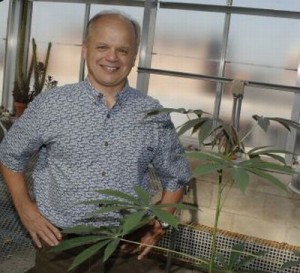 While producing a green fuel from a green pond scum… turning algae into biodiesel… isn’t anything new, doing it in the nation’s breadbasket, where plenty of soybeans for biodiesel are already being grown, is a bit more of a novel concept.
While producing a green fuel from a green pond scum… turning algae into biodiesel… isn’t anything new, doing it in the nation’s breadbasket, where plenty of soybeans for biodiesel are already being grown, is a bit more of a novel concept.
 In this edition of the Domestic Fuel Cast, we talk to Dr. Richard Sayre, the Director of the Enterprise Rent A Car Institute For Renewable Fuels at the Donald Danforth Plant Science Center in St. Louis, Missouri. He says the future for biodiesel production in the Midwest could be in the form of the common, single-celled organism that out-produces conventional land crops for biodiesel by two to tenfold.
In this edition of the Domestic Fuel Cast, we talk to Dr. Richard Sayre, the Director of the Enterprise Rent A Car Institute For Renewable Fuels at the Donald Danforth Plant Science Center in St. Louis, Missouri. He says the future for biodiesel production in the Midwest could be in the form of the common, single-celled organism that out-produces conventional land crops for biodiesel by two to tenfold.
Sayre says cost is one of the biggest issues to overcome as algae biodiesel right now costs about $4 a gallon. But he believes that with some better technology, in the ponds and in the actual algae cells, that cost could be down to just $2 a gallon… comparable to non-renewable petroleum. And Sayre says algae doesn’t have to be grown in the Midwest, where winters are tougher than more algae-traditional areas, such as the desert areas of the American Southwest. The more moderate summers of the Midwest are actually more conducive to algae growth, and the area obviously has more water, vital for algae. Finally, Sayre says there are techniques, such as harvesting the CO2 and heat from coal-powered plants to keep the ponds clear of ice even in the coldest of winters.
He makes some great points, and you can hear more of it here: [audio:http://www.zimmcomm.biz/domesticfuel/DFCast-7-10-09.mp3]

